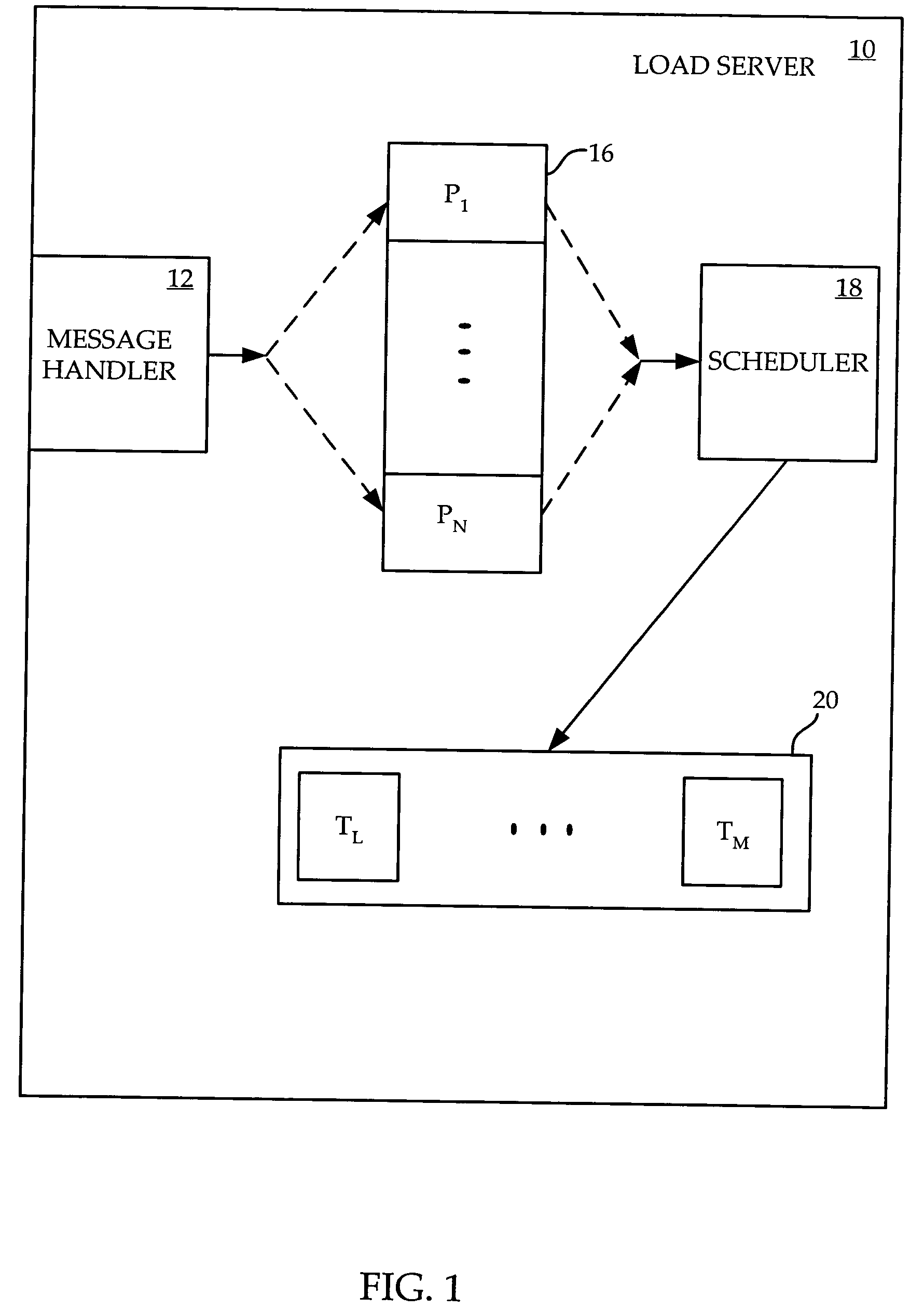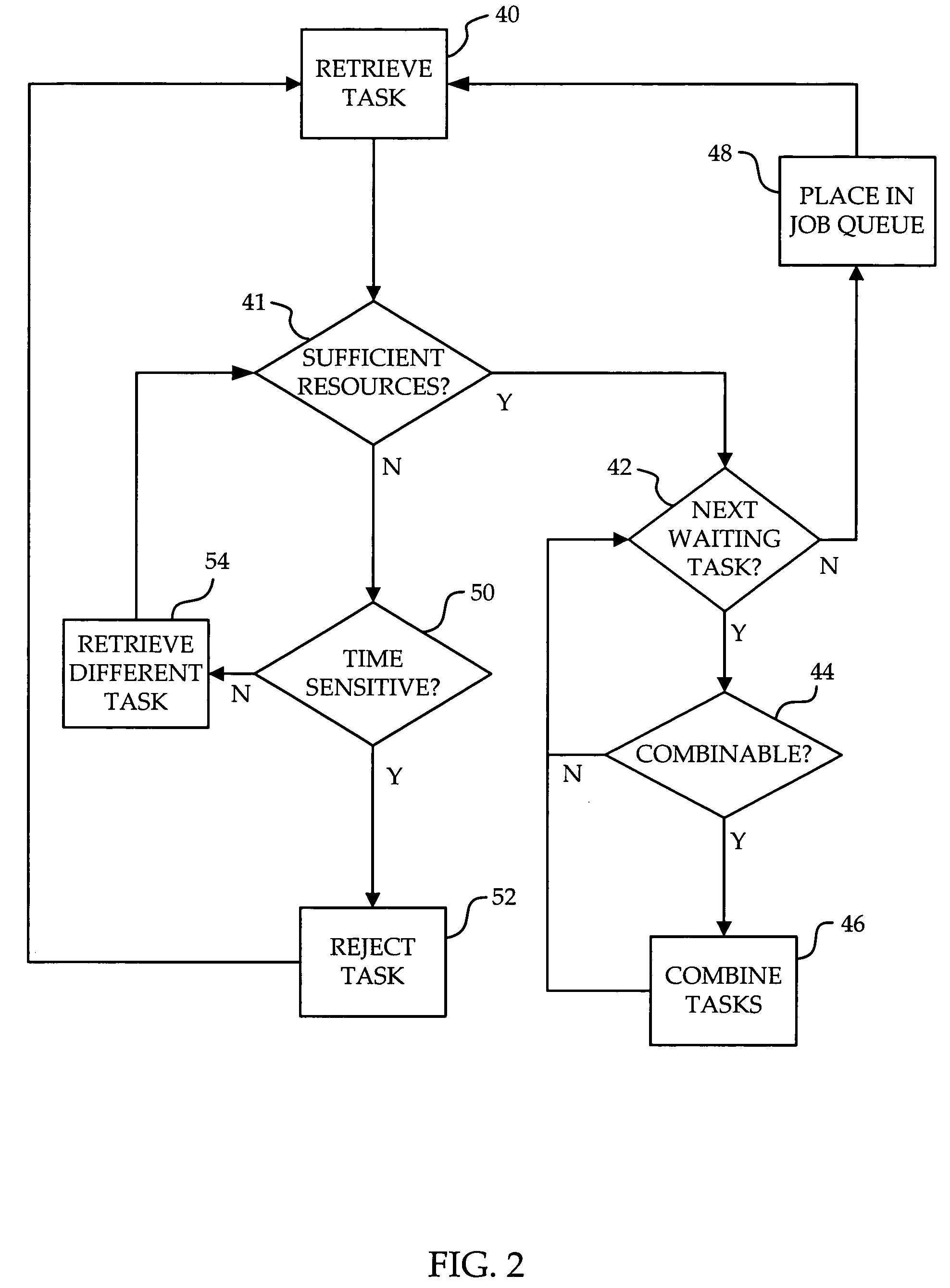Intelligent scheduler for multi-level exhaustive scheduling
a scheduling and intelligent technology, applied in the field of computing and communication systems, can solve the problems of unnecessarily rejecting tasks, affecting so as to reduce the amount of resources needed, improve the efficiency of tasks, and improve the effect of multitasking
- Summary
- Abstract
- Description
- Claims
- Application Information
AI Technical Summary
Benefits of technology
Problems solved by technology
Method used
Image
Examples
Embodiment Construction
[0015] Referring to FIG. 1, a block diagram of a portion of a load server 10 is shown. The load server 10 includes a message handler 12 which receives tasks from a management layer (not shown in FIG. 1). Each task has one of a plurality of ordered priorities P1 to PN, P1 being the highest priority. Each task includes a number of fields of ancillary information, including a list of at least one destination. As the message handler receives each task, the message handler determines the priority of the task and places the task in a work queue 16. Tasks stored within the work queue 16 are referred to herein as waiting tasks, and are ordered by priority. For example, the work queue could include a linked list for each of the priorities, each linked list containing tasks of the corresponding priority. Although some waiting tasks may have the same priority, there will always be a waiting task for which no other waiting task has a higher priority. A scheduler 18 accesses tasks within the wor...
PUM
 Login to View More
Login to View More Abstract
Description
Claims
Application Information
 Login to View More
Login to View More - R&D
- Intellectual Property
- Life Sciences
- Materials
- Tech Scout
- Unparalleled Data Quality
- Higher Quality Content
- 60% Fewer Hallucinations
Browse by: Latest US Patents, China's latest patents, Technical Efficacy Thesaurus, Application Domain, Technology Topic, Popular Technical Reports.
© 2025 PatSnap. All rights reserved.Legal|Privacy policy|Modern Slavery Act Transparency Statement|Sitemap|About US| Contact US: help@patsnap.com



